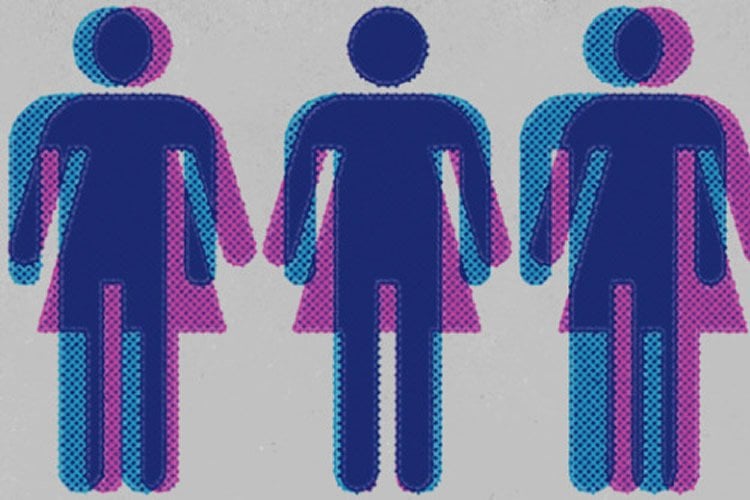Study reveals baseline characteristics of youth seeking care for gender dysphoria.
Johanna Olson, MD, and her colleagues at Children’s Hospital Los Angeles, provide care for the largest number of transyouth in the U.S. and have enrolled 101 patients in a study to determine the safety and efficacy of treatment that helps patients bring their bodies into closer alignment with their gender of identity. Baseline characteristics of these individuals have been published on July 21 in the Journal of Adolescent Health and include a significant finding: transgender individuals have sex hormone levels consistent with the gender they were assigned at birth.
“We’ve now put to rest the residual belief that transgender experience is a result of a hormone imbalance,” says Olson. “It’s not.”
The classification of “boy” or “girl” given to babies at birth—their assigned sex—is typically based on external genitalia. Transgender individuals have a gender identity different from the sex they were assigned at birth. The persistent distress and anxiety that may result from this dissonance is called gender dysphoria. Young people with gender dysphoria are seeking medical care at a younger age and in greater numbers than ever before.
The 101 individuals enrolled in this study include nearly equivalent numbers of individuals assigned “male” at birth but who identify as transfeminine (51.5%) and individuals assigned “female” at birth but who identify as transmasculine (48.5%).
Participants, who were 12 to 24 years old, identified a discrepancy with their gender of assignment on average at about 8 years of age but disclosed it to their families much later (17.1 years). Living with this “secret” for such a long period of time may have a negative impact on mental health. Thirty-five percent of participants experienced depression within clinical ranges. Over half of the youth reported having considered suicide and 30% had made at least one attempt.

“My goal is to move kids who are having a gender atypical experience from survive to thrive,” said Olson. “With this study we hope to identify the best way to accomplish that.”
Subsequent reports of this ongoing study will track the safety and efficacy of medical intervention as well as the impact of intervention on quality of life, high-risk behaviors, suicidality and depression.
Source: Media Team – Children’s Hospital of Los Angeles
Image Credit: The image is credited to Children’s Hospital of Los Angeles
Original Research: Abstract for “Baseline Physiologic and Psychosocial Characteristics of Transgender Youth Seeking Care for Gender Dysphoria” by Johanna Olson, Sheree M. Schrager, Marvin Belzer, Lisa K. Simons, Leslie F. Clark in Journal of Adolescent Health. Published online July 21 2015 doi:10.1016/j.jadohealth.2015.04.027
Abstract
Baseline Physiologic and Psychosocial Characteristics of Transgender Youth Seeking Care for Gender Dysphoria
Purpose
The purpose of this study was to describe baseline characteristics of participants in a prospective observational study of transgender youth (aged 12–24 years) seeking care for gender dysphoria at a large, urban transgender youth clinic.
Methods
Eligible participants presented consecutively for care at between February 2011 and June 2013 and completed a computer-assisted survey at their initial study visit. Physiologic data were abstracted from medical charts. Data were analyzed by descriptive statistics, with limited comparisons between transmasculine and transfeminine participants.
Results
A total of 101 youth were evaluated for physiologic parameters, 96 completed surveys assessing psychosocial parameters. About half (50.5%) of the youth were assigned a male sex at birth. Baseline physiologic values were within normal ranges for assigned sex at birth. Youth recognized gender incongruence at a mean age of 8.3 years (standard deviation = 4.5), yet disclosed to their family much later (mean = 17.1; standard deviation = 4.2). Gender dysphoria was high among all participants. Thirty-five percent of the participants reported depression symptoms in the clinical range. More than half of the youth reported having thought about suicide at least once in their lifetime, and nearly a third had made at least one attempt.
Conclusions
Baseline physiologic parameters were within normal ranges for assigned sex at birth. Transgender youth are aware of the incongruence between their internal gender identity and their assigned sex at early ages. Prevalence of depression and suicidality demonstrates that youth may benefit from timely and appropriate intervention. Evaluation of these youth over time will help determine the impact of medical intervention and mental health therapy.
“Baseline Physiologic and Psychosocial Characteristics of Transgender Youth Seeking Care for Gender Dysphoria” by Johanna Olson, Sheree M. Schrager, Marvin Belzer, Lisa K. Simons, Leslie F. Clark in Journal of Adolescent Health. Published online July 21 2015 doi:10.1016/j.jadohealth.2015.04.027






